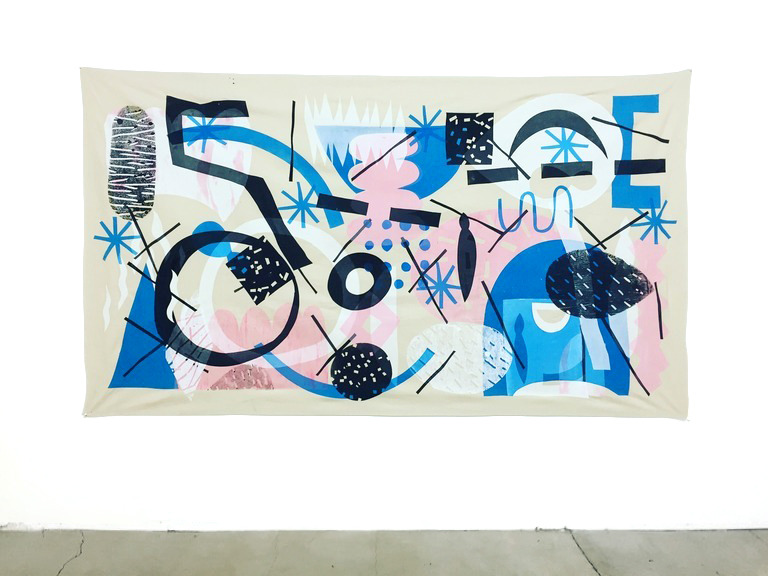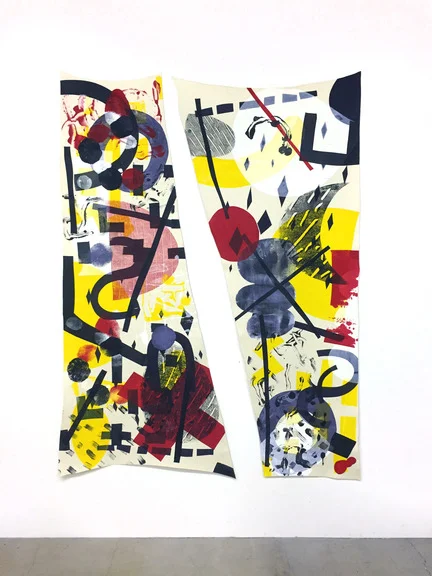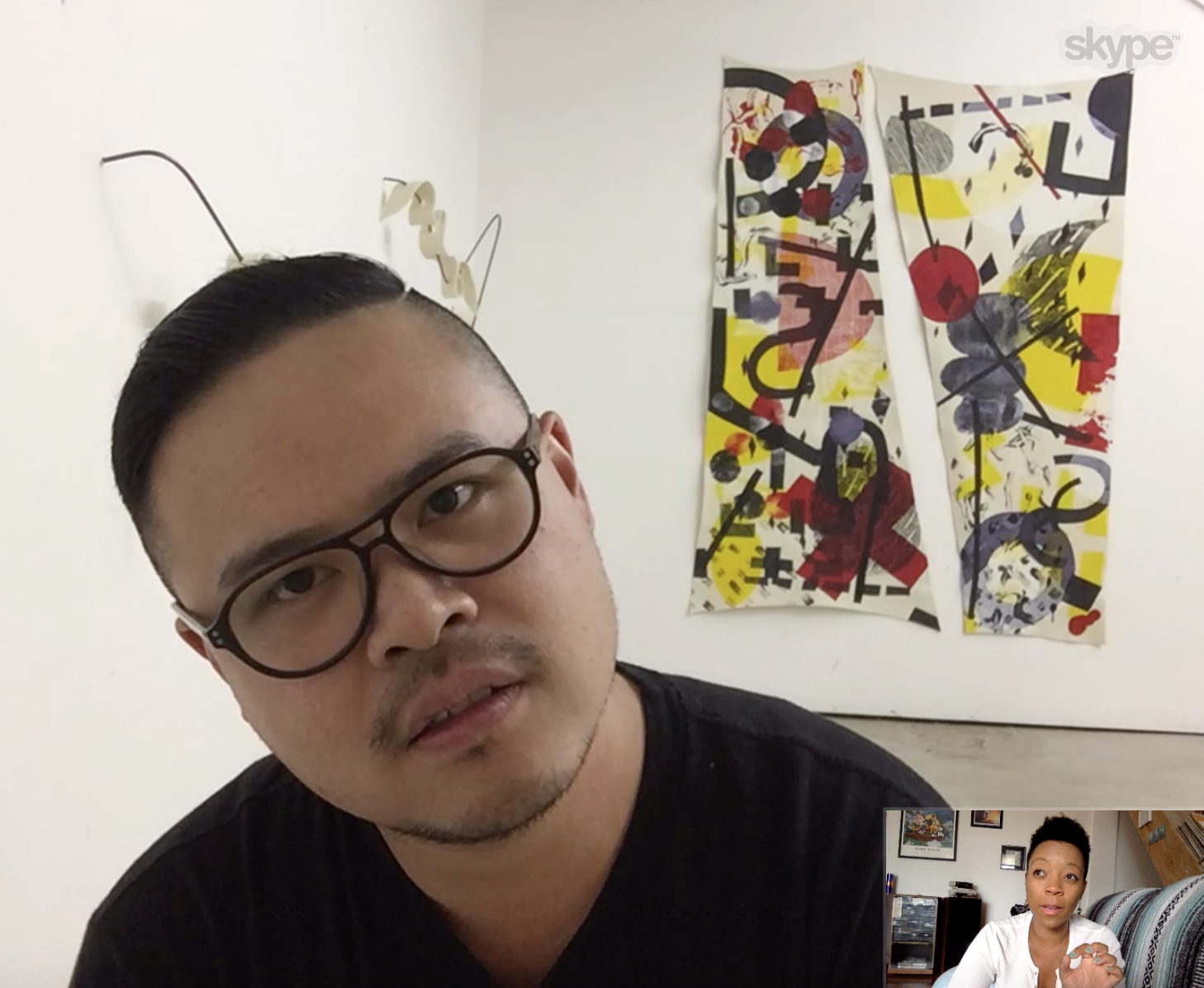








Your Custom Text Here
An Interview for Sixty Inches From Center
July 2016
For those who aren’t convinced of the complexities that abstraction can hold, I offer the work of Jovencio de la Paz to persuade you. Once you get past the boldness of his large fabric or felted surfaces and move through the elegance of overlapping shapes lingering in space, you’ll find something symbolic, celestial, ancestral, and deeply political. The way he approaches form and materials evidences a careful consideration of the heavy repercussions of colonialism and trade, art history, and contemporary life. He takes these anchors and combines them with a personal yet widely relevant symbology that embraces the range of his cultural inheritance. He employs all of it and then some from his perspective as an immigrant to the United States from Singapore, as an artist harnessing the tools of queer aesthetics, and as a maker using materials and processes that have countless generations of makers behind them. The result is a synthesis and translation of a highly personal and global visual language.
After receiving his MFA at Cranbrook Academy of Art in Michigan, de la Paz moved to Chicago and continued to investigate fibers and performance through an active studio practice and co-founding the Craft Mystery Cult, a collaborative that seeks to, in short, “remind each body of its own agency”. Somewhat recently, he relocated from Chicago to Eugene, Oregon–a move that has only continued to help him define and refine his craft. He now teaches in and heads the fibers program in the Department of Art at the University of Oregon. Most recently, his show Skin Broken by Prisms closed as the final exhibition for Carl & Sloan Contemporary in Portland.
Just before the opening of his exhibition, we had a conversation about movement and migration, the role of artists and abstraction in revolution, and the poetics embedded in batik’s lost wax process.
All photos courtesy of the artists, except the last screen shot of our Skype conversation.
An Interview for Sixty Inches From Center
July 2016
For those who aren’t convinced of the complexities that abstraction can hold, I offer the work of Jovencio de la Paz to persuade you. Once you get past the boldness of his large fabric or felted surfaces and move through the elegance of overlapping shapes lingering in space, you’ll find something symbolic, celestial, ancestral, and deeply political. The way he approaches form and materials evidences a careful consideration of the heavy repercussions of colonialism and trade, art history, and contemporary life. He takes these anchors and combines them with a personal yet widely relevant symbology that embraces the range of his cultural inheritance. He employs all of it and then some from his perspective as an immigrant to the United States from Singapore, as an artist harnessing the tools of queer aesthetics, and as a maker using materials and processes that have countless generations of makers behind them. The result is a synthesis and translation of a highly personal and global visual language.
After receiving his MFA at Cranbrook Academy of Art in Michigan, de la Paz moved to Chicago and continued to investigate fibers and performance through an active studio practice and co-founding the Craft Mystery Cult, a collaborative that seeks to, in short, “remind each body of its own agency”. Somewhat recently, he relocated from Chicago to Eugene, Oregon–a move that has only continued to help him define and refine his craft. He now teaches in and heads the fibers program in the Department of Art at the University of Oregon. Most recently, his show Skin Broken by Prisms closed as the final exhibition for Carl & Sloan Contemporary in Portland.
Just before the opening of his exhibition, we had a conversation about movement and migration, the role of artists and abstraction in revolution, and the poetics embedded in batik’s lost wax process.
All photos courtesy of the artists, except the last screen shot of our Skype conversation.
Copyright © 2025 Tempestt Hazel, All rights reserved.